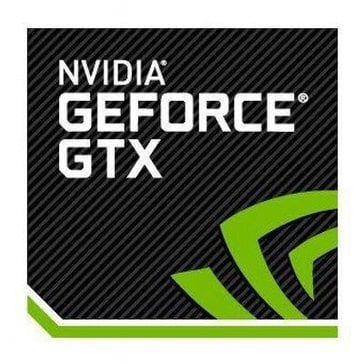Description

Matali Physics

PhysicsJS
Comprehensive Overview: Matali Physics vs PhysicsJS
Matali Physics and PhysicsJS are both physics engines used for simulating realistic physical interactions in virtual environments, but they cater to different audiences and have distinct features. Here's a comprehensive overview of each:
a) Primary Functions and Target Markets
Matali Physics:
- Primary Functions: Matali Physics is a commercial, high-performance physics engine designed for 3D simulations. It aims to provide accurate and efficient physics calculations for complex simulations, including rigid body dynamics, soft body dynamics, fluid dynamics, and more.
- Target Markets: This engine targets professionals in various industries, including video game development, augmented reality, virtual reality, scientific research, engineering simulations, and more. It is also used in academic settings for research and educational purposes.
PhysicsJS:
- Primary Functions: PhysicsJS is an open-source 2D physics engine written in JavaScript. Its primary goal is to facilitate physics-based simulations and animations directly within web browsers, leveraging the capabilities of HTML5 and JavaScript.
- Target Markets: The primary audience for PhysicsJS includes web developers and hobbyists interested in creating interactive web content, such as games, educational tools, and visual demonstrations. It is particularly appealing for those who seek to integrate physics simulations into web applications without the need for complex setup or external dependencies.
b) Market Share and User Base
-
Matali Physics: Since Matali Physics is a commercial product, its market share is generally lower but more focused on professional environments where high accuracy and performance are critical. Its user base primarily consists of organizations and institutions rather than individual hobbyists.
-
PhysicsJS: As an open-source project with a free-to-use model, PhysicsJS typically enjoys a broader user base among web developers and enthusiasts. However, it is less likely to be used in intensive commercial applications due to its 2D focus and limitations in handling complex, large-scale simulations.
c) Key Differentiating Factors
-
Dimensionality: One of the most significant differences is dimensional capability. Matali Physics supports 3D simulations, making it suitable for applications that require three-dimensional interaction modeling, whereas PhysicsJS focuses on 2D simulations.
-
Performance and Complexity: Matali Physics is optimized for high performance and handling complex scenarios involving numerous interacting bodies. It is typically integrated into larger systems and applications where physics plays a critical role in overall functionality. In contrast, PhysicsJS is simpler and designed for less computationally intensive tasks, making it ideal for browser-based applications where ease of use and integration are prioritized.
-
Platform and Language: Matali Physics is a standalone physics engine that can be integrated into various applications, often requiring modifications at the code level for complex simulations. It is proprietary and commercial. Conversely, PhysicsJS is built using JavaScript, making it highly accessible for web developers working within the HTML5 ecosystem.
-
Community and Support: As an open-source project, PhysicsJS benefits from a community-driven approach, providing updates and support via community forums and repositories. Matali Physics, being a commercial product, offers professional support and services, including technical support and options for customization tailored to client needs.
In summary, Matali Physics and PhysicsJS serve different niches within the broad domain of physics simulation engines. Matali Physics caters to professionals requiring high precision in 3D simulations, while PhysicsJS targets web developers looking to incorporate 2D physics in their browser-based projects.
Contact Info

Year founded :
Not Available
Not Available
Not Available
Not Available
Not Available

Year founded :
Not Available
Not Available
Not Available
Not Available
Not Available
Feature Similarity Breakdown: Matali Physics, PhysicsJS
When comparing physics engines like Matali Physics and PhysicsJS, it's useful to understand their core features, user interfaces, and unique characteristics. Here's a detailed breakdown:
a) Core Features in Common:
-
Physics Simulation:
- Both Matali Physics and PhysicsJS provide robust physics simulation capabilities including collision detection, rigid body dynamics, and impulse resolution.
-
2D Physics:
- While their scope can vary, both libraries can handle 2D physics simulations effectively, making them suitable for games and applications that operate in two-dimensional spaces.
-
Collision Detection and Response:
- Both engines incorporate essential algorithms for detecting collisions between objects and responding to them, ensuring realistic physical interactions.
-
Constraint Solving:
- They support creating constraints between objects to simulate various connections, like joints or springs.
-
Forces and Basic Dynamics:
- Both engines allow applying forces to objects, affecting their velocities and accelerations to simulate realistic movements due to gravity, friction, etc.
b) User Interface Comparison:
-
Matali Physics:
- Matali Physics is known for being a comprehensive and highly versatile engine often integrated into larger game development environments. Its interface is typically accessed through programmed APIs within the development environments it supports. It may offer more GUI tools if integrated into environments like Unity (as part of plugin offerings), giving users more intuitive drag-and-drop features.
-
PhysicsJS:
- PhysicsJS is a JavaScript library, meaning it is often used in web development contexts and accessed through JavaScript code. It typically relies on scripting rather than a graphical user interface, although it can be integrated with graphical editors for visual development. The interface is developer-friendly, designed to be easily used in conjunction with web-based technologies.
c) Unique Features:
-
Matali Physics:
- Cross-Platform Compatibility: Known for its cross-platform capabilities and support for high-performance applications across various devices.
- Plugin Architecture: Offers a plugin system allowing for extensive customization and expansion of physics features.
- Advanced 3D Capabilities: Although focused here on 2D, Matali Physics also prides itself on sophisticated 3D capabilities which might be available as enhanced features or separate offerings.
-
PhysicsJS:
- Web Integration: Optimized for integration into web applications, allowing easy use alongside HTML/CSS and other web technologies.
- Lightweight and Modular: Designed to be lightweight with a modular architecture, it allows users to include only the parts of the library they need, enhancing performance for specific applications.
In summary, while both Matali Physics and PhysicsJS share core features typical of physics engines, they are distinguished by their respective platform optimizations and user interface styles. Matali Physics is particularly strong in comprehensive application support and cross-platform integration, while PhysicsJS excels in web-based, lightweight deployments.
Features

Not Available

Not Available
Best Fit Use Cases: Matali Physics, PhysicsJS
Matali Physics and PhysicsJS are both physics engines used for creating simulations and incorporating physical behaviors in digital environments. While they serve similar purposes, their specific features and capabilities make them suited for different use cases, business types, projects, and industry needs. Here's a breakdown of their best-fit use cases:
Matali Physics
a) For what types of businesses or projects is Matali Physics the best choice?
-
Game Development Studios: Matali Physics is robust and capable of handling complex simulations, making it ideal for game developers looking to create immersive and realistic environments, especially for 3D games.
-
Virtual Reality (VR) and Augmented Reality (AR) Applications: The engine's accuracy and advanced physics capabilities make it a good fit for VR/AR apps where lifelike interactions are crucial.
-
Simulation Software: Businesses developing simulation software for industries such as automotive, aerospace, or robotics can benefit from Matali's precision and performance.
-
Large-Scale Projects: Companies engaged in large or resource-intensive projects might prefer Matali due to its scalability and support for expansive, detailed worlds.
-
Cross-Platform Applications: As a mature engine, Matali offers excellent cross-platform capabilities, which is beneficial for businesses targeting multiple device ecosystems.
d) How does Matali Physics cater to different industry verticals or company sizes?
-
Industry Verticals: Matali Physics is suitable for a wide range of verticals, including gaming, training and simulation, film and entertainment, and engineering design. Its comprehensive feature set is appealing to enterprises needing precision and reliability.
-
Company Sizes: Larger companies or those with significant resources can leverage Matali’s full potential, given the engine’s complexity and potentially higher integration costs.
PhysicsJS
b) In what scenarios would PhysicsJS be the preferred option?
-
Web Development Agencies: PhysicsJS is a JavaScript library, making it a great choice for web-based game developers and web applications needing simple physics interactions.
-
Educational Projects: Educators and developers creating interactive educational tools might prefer PhysicsJS for its simplicity and ease of use, which can facilitate faster development and prototyping.
-
Small to Medium Businesses: SMBs working on 2D games or simple physics simulations would find PhysicsJS more cost-effective and easier to implement.
-
Rapid Prototyping: Projects that require rapid prototyping of physics-based interactions might find PhysicsJS appealing due to its lightweight nature and straightforward implementation.
-
Browser-Based Applications: Ideal for applications that need to operate entirely in web browsers without relying on external plugins or environments.
d) How does PhysicsJS cater to different industry verticals or company sizes?
-
Industry Verticals: PhysicsJS is particularly useful in the education sector, web-based gaming, and interactive marketing or promotion, where lightweight, fast-loading, and straightforward simulations are desired.
-
Company Sizes: It's well-suited for small to medium-sized businesses or independent developers who are budget-conscious or looking to minimize development complexity.
In summary, the choice between Matali Physics and PhysicsJS largely depends on the project scale, complexity, and specific requirements regarding performance, accuracy, and platform. Matali Physics excels in complex, resource-intensive, and cross-platform projects, while PhysicsJS is perfect for lightweight, easily deployable web-based applications.
Pricing

Pricing Not Available

Pricing Not Available
Metrics History
Metrics History
Comparing undefined across companies
Conclusion & Final Verdict: Matali Physics vs PhysicsJS
To provide a conclusion and final verdict for Matali Physics and PhysicsJS, we need to consider several key aspects including performance, ease of use, compatibility, community support, and cost. Based on these factors, we can offer insights into which product offers the best overall value and provide specific recommendations for users.
a) Best Overall Value
Matali Physics:
- Matali Physics generally offers a robust physics engine with extensive features, making it suitable for more complex, demanding applications. Its performance efficiency and detailed simulation capabilities provide significant value, especially for users needing advanced physics simulations.
PhysicsJS:
- PhysicsJS, being a JavaScript physics engine, is particularly advantageous for web-based projects. It is lightweight, easy to integrate, and suitable for applications that can run within browsers. Its open-source nature also provides a cost-effective solution for web developers.
Verdict: If you are working primarily with web projects and need a cost-effective, lightweight solution, PhysicsJS emerges as the best value. However, for more complex simulations requiring powerful performance, Matali Physics provides excellent overall value despite potentially higher costs.
b) Pros and Cons
Matali Physics Pros:
- Comprehensive feature set for complex simulations.
- High performance and efficiency for demanding applications.
- Suitable for a wide range of platforms beyond just web.
Matali Physics Cons:
- May be more costly compared to open-source solutions.
- Potentially steeper learning curve for beginners.
- Overkill for simple projects, leading to unnecessary complexity.
PhysicsJS Pros:
- Lightweight and ideal for web applications.
- Open-source and cost-effective.
- Easier to learn and use for developers familiar with JavaScript.
PhysicsJS Cons:
- Limited to web environments, not suitable for all platforms.
- May lack advanced features needed for very complex simulations.
- Performance might not match more powerful engines for large-scale applications.
c) Recommendations
-
For Web Developers: If your primary platform is the web and you're looking for ease of integration, PhysicsJS is recommended due to its lightweight and open-source nature. It is ideal for small to medium-scale interactive projects where ease of use and integration into web environments are critical benefits.
-
For Developers Needing Advanced Simulations: If your requirement involves complex physics or cross-platform simulation, Matali Physics is the recommended choice. It offers more comprehensive features and performance needed for intricate simulations.
-
Considering Future Projects: Assess the potential needs of your future projects. If there's a likelihood of expanding beyond web-based applications or requiring more advanced simulations, investing time in learning Matali Physics might be worthwhile.
In conclusion, the choice between Matali Physics and PhysicsJS largely hinges on project requirements, budget constraints, and platform specificity. By weighing these factors, developers can make an informed decision that aligns with their specific project goals and constraints.



